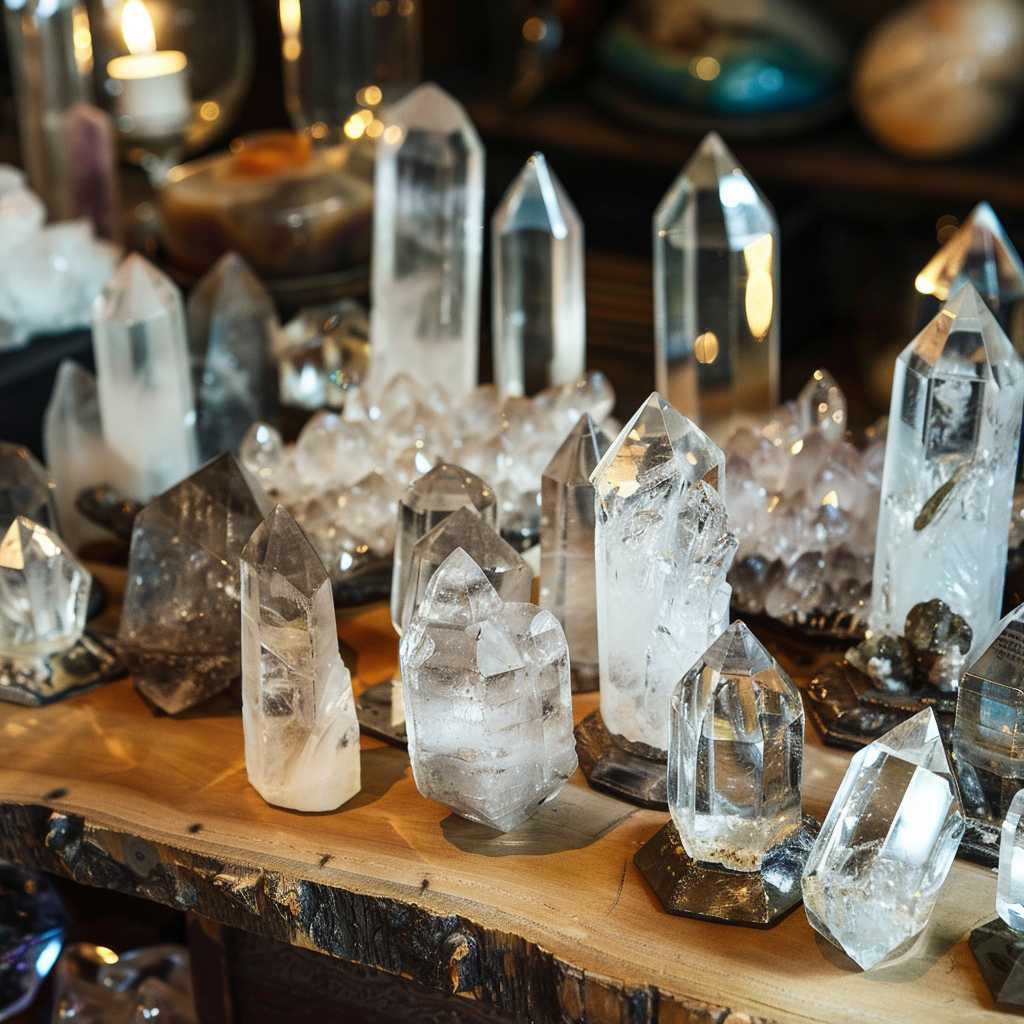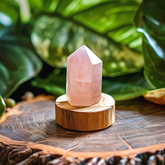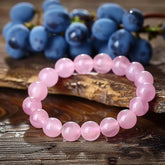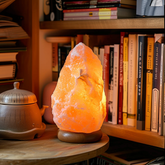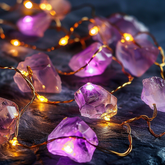Are Artificial Olive Trees Good for Home Decor?
Are Artificial Olive Trees Good for Home Decor?
Have you ever walked into a room and felt it needed just one more touch to feel complete? Many of us crave that perfect blend of nature and style but dread the upkeep of real plants. That’s where the magic of modern design solutions comes in.

Imagine a piece that captures the sun-kissed elegance of the Mediterranean, with silvery-green leaves that never wilt. These sophisticated additions elevate spaces effortlessly, blending with minimalist modern layouts or cozy traditional settings. No watering. No sunlight battles. Just pure, uncomplicated charm.
At Gaia's Tears, we’ve perfected the art of crafting lifelike botanicals. Our collections focus on realistic textures and natural shapes, making each piece feel alive. Whether placed in an entryway or beside a fireplace, these creations add warmth while staying fuss-free year-round.
Key Takeaways
- Low-maintenance elegance enhances any room style
- Year-round vibrancy without watering or sunlight needs
- Versatile sizing options fit spaces from studios to open floor plans
- Neutral tones complement existing color schemes seamlessly
- Trusted craftsmanship ensures lasting visual impact
Introduction to Artificial Olive Trees
There’s a reason these timeless pieces have graced interiors for decades. Their silvery-green leaves and airy branches whisper of sunlit Mediterranean hillsides, yet they thrive effortlessly in modern spaces. At Gaia's Tears, we craft each piece to honor nature’s artistry while freeing you from its demands.

What Defines an Artificial Olive Tree?
Authenticity lies in the details. Premium versions feature delicate leaves with subtle color variations, mimicking how sunlight dances on natural foliage. Graceful branches curve organically, while textured trunks replicate aged bark. Some designs even include tiny olive fruits for added realism—a nod to their symbolic role as emblems of peace.
Mediterranean Charm Without the Hassle
Imagine capturing coastal Italy’s relaxed elegance without worrying about soil pH or pruning schedules. Our designs use open structures that let light filter through, creating soft shadows that shift with the day. Pair them with terracotta pots or sleek planters—they adapt to your style instantly. For those seeking guidance, our artificial olive tree buying guide simplifies the selection process.
| Feature | Natural Olive Tree | Faux Olive Tree |
|---|---|---|
| Watering Needs | Weekly | None |
| Leaf Retention | Seasonal Shedding | Year-Round Fullness |
| Allergy Risk | Moderate | None |
Whether placed beside a reading nook or framing an office doorway, these creations invite calm. They’re not just decor—they’re experience enhancers, turning ordinary corners into tranquil retreats.
Overview of Gaia's Tears Artificial Trees
What separates ordinary decor from extraordinary style? At Gaia's Tears, we believe it’s the marriage of artistry and innovation. For over a decade, we’ve specialized in crafting botanical pieces that spark double-takes—our premium faux botanicals blend seamlessly into living spaces while standing apart in quality.

Our Trusted Brand Story
We started with a simple mission: create greenery so lifelike, you’d forget it’s not rooted in soil. Every stem we craft begins with months of studying Mediterranean orchards. “The curve of a branch tells a story,” says our lead designer. “We’re not replicating plants—we’re preserving nature’s poetry.”
Premium Quality and Craftsmanship
Touch one of our olive-inspired pieces, and you’ll feel the difference. Silk leaves mimic natural veining, while trunks feature hand-painted bark textures. Our secret? A reinforced steel core wrapped in flexible resin—it holds dramatic shapes without sagging. Clients often share stories of guests reaching out to “pluck” nonexistent olives.
We’ve turned durability into an art form. UV-resistant materials prevent fading, and dust-resistant coatings keep maintenance minimal. It’s why interior designers call our collections “the last faux plants you’ll ever need to buy.”
Are artificial olive trees good for home decor?
Ever wondered why these sculpted beauties appear in so many design magazines? The answer lies in their chameleon-like ability to adapt. Unlike rigid decor trends, faux olive trees work equally well in farmhouse kitchens and modern lofts. Their secret? A timeless silhouette that whispers sophistication without demanding attention.

Understanding the Buyer's Guide Perspective
Designers love them because they solve multiple problems at once. Dark corners come alive with lifelike greenery. Awkward empty spaces gain purpose. "A well-placed olive tree can turn a forgettable nook into a room’s heartbeat," notes a recent best faux olive trees roundup. We’ve seen clients use them as:
- Natural room dividers in open-concept homes
- Statement pieces beside minimalist furniture
- Subtle texture enhancers for monochromatic schemes
Real plants can’t match this flexibility. Our clients often share how these pieces thrive where sunlight fears to tread—basement offices, windowless bathrooms, even closets turned meditation zones. No watering means no warped floors or mold risks either.
Durability meets sustainability here. High-quality versions last decades, reducing waste from replacing dead plants. Plus, they’re hypoallergenic—a relief for sneeze-prone households. Whether you’re renting or owning, these trees grow with your style, not against it.
Key Benefits of Artificial Olive Trees
Want decor that elevates your space without draining your budget or time? Modern solutions now let you enjoy nature’s beauty without its demands. These pieces blend practicality with enduring style, offering perks real plants simply can’t match.
Low-Maintenance & Budget-Friendly Style
Swap messy soil and wilting leaves for hassle-free elegance. Our designs stay vibrant through seasons—no watering, pruning, or plant replacements. Over five years, you’ll save $300+ on care costs compared to living versions. That’s money better spent on cozy throws or statement lamps.
| Factor | Real Olive Tree | Faux Olive Tree |
|---|---|---|
| Annual Upkeep Cost | $60+ | $0 |
| Lifespan | 3-5 years | 10+ years |
| Weekly Care Time | 45 minutes | 2 minutes (dusting) |
Earth-Conscious & Family-Friendly Perks
Every Gaia’s Tears creation supports sustainable living. By choosing faux, you save 500+ gallons of water yearly versus nurturing real plants. Our materials contain zero pesticides—ideal for homes with kids or allergy sufferers. Pet owners love them too; no toxic leaves to worry about.
We craft each piece to last decades, reducing landfill waste from discarded plants. Clients often tell us their faux olive becomes a timeless heirloom, moving effortlessly from first apartments to forever homes. Why settle for fleeting beauty when you can have evergreen charm?
Craftsmanship and Realistic Design of Gaia's Tears Olive Trees
What makes decor truly unforgettable? At Gaia's Tears, we believe it’s the whispers of authenticity in every detail. Our designers spend months studying Mediterranean orchards, capturing how sunlight plays on olive groves at dusk. This obsession fuels creations that invite second glances—and gentle touches to confirm they’re not living plants.
Realistic Textures and Detailed Leaves
Our silk leaves feel like nature froze in perfection. Each one undergoes a 12-step process to replicate subtle color shifts—silvery undertones here, sage highlights there. Tiny veins press into the material, creating shadows that mimic living foliage. Guests often lean in, expecting to catch the scent of fresh herbs.
We layer leaves in organic clusters, avoiding the "too perfect" look of mass-produced options. The result? Branches that sway naturally when adjusted, thanks to flexible steel cores wrapped in hand-painted resin. Even the "olives" get special treatment—matte finishes prevent plastic-like shine.
Sturdy Trunks That Mimic Nature
Run your fingers along our trunks, and you’ll feel ridges where bark should crack. Artisans carve each one using molds from century-old trees, then add mineral streaks for aged character. Unlike flimsy foam bases, our weighted planters provide stability for dramatic lean angles.
Wire frameworks let you shape branches like a living tree. Bend them upward for cheerful energy or let them cascade for relaxed vibes. This adaptability means your piece evolves with your space—no pruning shears required.
Every element works to fool the eye. From the way leaves cluster near branch tips to the gentle droop of mature growth patterns, we’ve bottled Mediterranean magic. It’s not just decor—it’s a conversation starter that never asks for water.
Versatile Styling Ideas for Indoor & Office Spaces
Transform underutilized spaces into curated moments that spark joy. Whether dressing a sunlit corner or softening harsh office lighting, these design heroes adapt to your needs. Their flexible forms work magic in unexpected places—no green thumb required.
Living Room, Entryway, and Dining Space Enhancements
In living areas, position your centerpiece near seating groups to anchor conversations. Try flanking a neutral sofa with twin pots for symmetrical balance. Entryways thrive with taller specimens—their upward-reaching branches draw eyes upward, making cramped spaces feel airy.
Dining spaces shine when greenery frames meal experiences. Place one beside a buffet table or use a petite version as a tablescape runner. “The right placement turns meals into Mediterranean escapes,” notes a recent guide on how to style your faux olive.
Elevating Office and Interior Ambience
Office environments gain calm through strategic greenery. Position leafy friends near workstations to soften screen glare. Conference rooms benefit from floor models that reduce echo while maintaining professionalism. For corners, choose angled planters that follow wall lines—maximizing impact without crowding walkways.
Play with elevation in multi-use spaces. Stacked books under smaller pots create visual interest on shelves. Rotate branches seasonally—tilt them toward windows in summer, cluster tightly in winter for cozy vibes. Every adjustment tells a new story.
Product Comparisons and Consumer Reviews
Choosing the right centerpiece requires balancing aesthetics with practical needs. Let’s explore how leading brands stack up in design and durability.
Highlights from Top Faux Olive Trees
Three brands dominate conversations for their unique strengths. Hobyhoon’s fuller canopy creates instant focal points, while Pottery Barn offers lifelike olives in two heights. Limnan shines with weather-resistant materials perfect for patios.
| Brand | Height Range | Price Point | Unique Feature |
|---|---|---|---|
| Hobyhoon | 6.5–7.5 ft | $189–$249 | Extra-dense leaf clusters |
| Pottery Barn | 5–7 ft | $299–$399 | Hand-attached faux olives |
| Limnan | 4–9 ft | $159–$329 | UV-protected outdoor use |
What Our Customers Are Saying
Real-world feedback reveals what specs can’t. One client transformed their sun-starved foyer: “This piece adds warmth where my fiddle leaf fig died.” Others praise Limnan’s stability in high-traffic areas.
Designers highlight Pottery Barn’s pot options for seamless styling. “The weighted base stays put during toddler tornadoes,” shared a parent. For open layouts, Hobyhoon’s width fills vertical space without overwhelming.
“Never thought I’d love a faux plant, but this tree made our farmhouse dining room complete.”
– Melissa R., Verified Buyer
Pairing Faux Olive Trees with Complementary Greenery
What transforms basic decor into magazine-worthy spaces? The secret lies in strategic layering. By combining your centerpiece with supporting botanicals, you create depth that feels both intentional and effortless.
Mix and Match with Other Faux Plants
Think of your faux olive as the lead singer in a botanical band. Pair it with citrus-inspired pieces for sunny Mediterranean energy. Add flowing willow branches to soften sharp corners. For spa-like serenity, surround it with eucalyptus stems—their blue-green tones complement silvery leaves beautifully.
Our Gaia’s Tears collections make pairing simple. Try these combinations:
- Lemon tree accents for coastal kitchen nooks
- Ficus varieties to balance bright living rooms
- Trailing ivy for bohemian shelf displays
Creating a Layered Botanical Look
Height variation adds drama. Place shorter rosemary bushes near your tree’s base, then add tall grasses behind it. Texture mixing prevents flatness—pair wispy ferns with sturdy succulents.
Color coordination matters. Stick to three main tones: sage greens, cream neutrals, and muted terracottas. This palette lets your centerpiece shine while supporting cast members add subtle interest.
Remember: odd numbers work best. Group three varying-height pots around your main piece. Rotate arrangements seasonally—swap citrus for pinecones in winter. Your space stays fresh without buying new centerpieces.
Practical Maintenance and Enhancement Tips
Your centerpiece deserves the same care as living botanicals – just without the water. With simple techniques, you can maintain its lifelike appeal while adding personal flair. Let’s explore how to elevate your decor through thoughtful adjustments.
Fluffing Techniques for a Natural Look
Unboxing excitement often reveals tightly packed branches. Here’s how to revive their natural flow:
- Start at the base, gently separating stems upward
- Rotate the pot 90 degrees every few minutes for even shaping
- Bend wire-supported branches into slight arcs
Patience pays off. One client shared: “I spent 20 minutes fluffing, and now visitors ask about my ‘gardening secrets’!” Avoid over-handling leaves – subtle imperfections enhance realism.
Accessorizing with Artificial Moss and Planters
Transform basic pots into styled statements. Spread preserved moss across the soil surface, tucking edges neatly. Pair with:
- Textured baskets for farmhouse charm
- Glazed ceramic pots in muted earth tones
- Metallic urns for modern spaces
Weighted bases prevent tipping while allowing creative leans. For seasonal updates, swap containers or add decorative stones. Pro tip: Match planter heights to nearby furniture for visual harmony.
Monthly dusting keeps leaves vibrant. Use microfiber cloths for smooth surfaces, soft brushes for textured bark. With minimal effort, your decor stays gallery-ready year-round.
Seasonal and Year-
Why limit nature’s charm to just one season? Our designs thrive through holiday shifts and summer heat waves with equal grace. A single centerpiece transitions effortlessly from spring pastels to autumn warmth—no plant swaps required.
We love how these pieces complement seasonal accents. Wrap fairy lights through branches for winter magic. Tuck silk blossoms among leaves for spring renewal. The flexible structure holds lightweight ornaments without bending permanently.
Year-round usability shines in unexpected spaces. Brighten home offices with perpetual greenery during gray winters. Create summer-ready patios by moving pots outdoors—UV-resistant materials prevent fading. As noted in our guide to seasonal decor transformations, this adaptability makes them ideal for renters and busy families.
True style doesn’t check the calendar. With minimal dusting and creative accessorizing, your botanical companion remains relevant through life’s constant changes. That’s the beauty of choosing timeless over trendy.
FAQ
How realistic do faux olive trees look compared to real ones?
Our designs feature hand-painted trunks, silk-molded leaves, and subtle color variations to mimic living plants. Brands like Gaia’s Tears use UV-resistant materials and textured bark for depth, making them nearly indistinguishable from natural olive trees.
Where’s the best place to put a faux olive tree in my home?
These trees shine in living rooms, entryways, or dining areas. A 6–7-foot tree in a woven planter adds drama to empty corners, while smaller 4-foot pots work well on desks or shelves. Pair them with warm lighting for cozy vibes!
Do these trees require special maintenance over time?
Unlike real plants, faux olives need no watering or pruning. Just dust the leaves monthly and fluff the branches occasionally. For extra realism, add artificial moss around the base or swap the pot seasonally.
Can I pair faux olive trees with other artificial plants?
Absolutely! Layer them with faux eucalyptus, lavender, or succulents for a lush, Mediterranean-inspired look. Stick to similar color tones (sage greens, muted grays) to keep the design cohesive.
Are Gaia’s Tears olive trees suitable for outdoor use?
Many of our UV-resistant options thrive on covered patios or balconies. Check product details for weatherproof ratings, and avoid placing them in direct rain or harsh sunlight to preserve their vibrant color.
What size should I choose for smaller spaces like apartments?
Opt for compact 4–5-foot trees in slim pots. Measure your space first—taller ceilings handle 7–9-foot statement pieces, while narrow corners benefit from petite designs under 3 feet. Always check the planter’s dimensions too!


